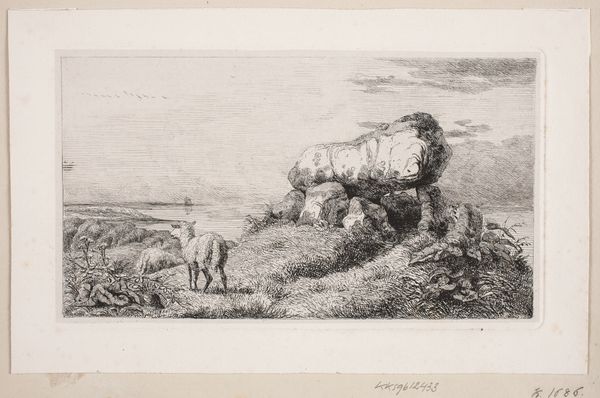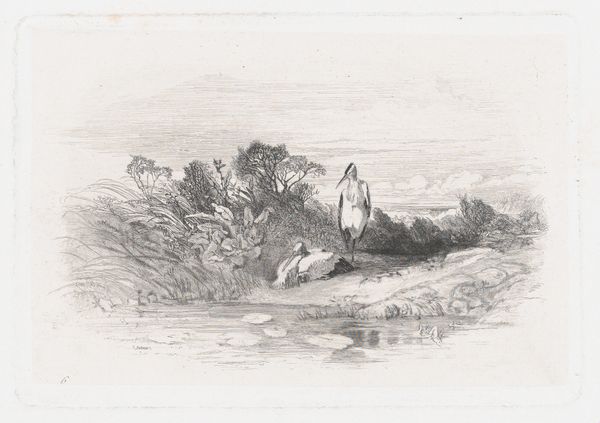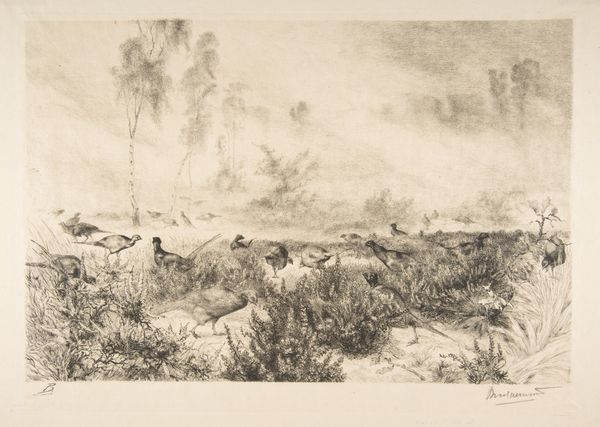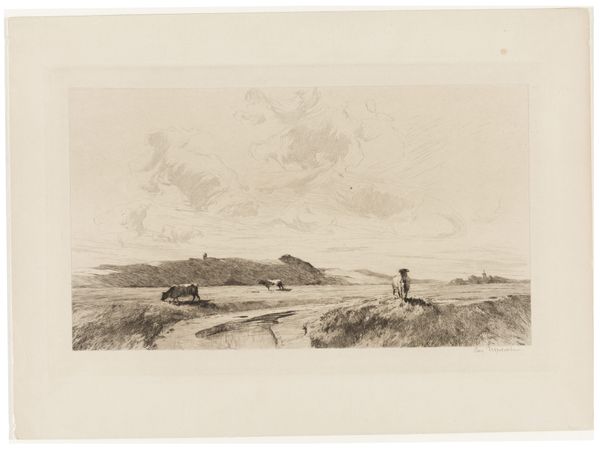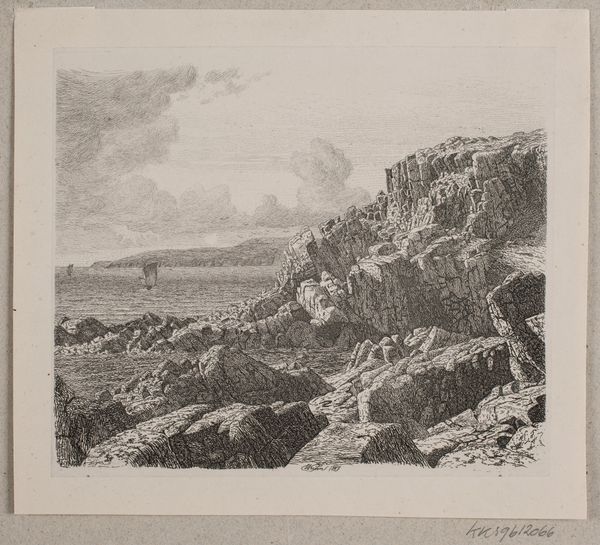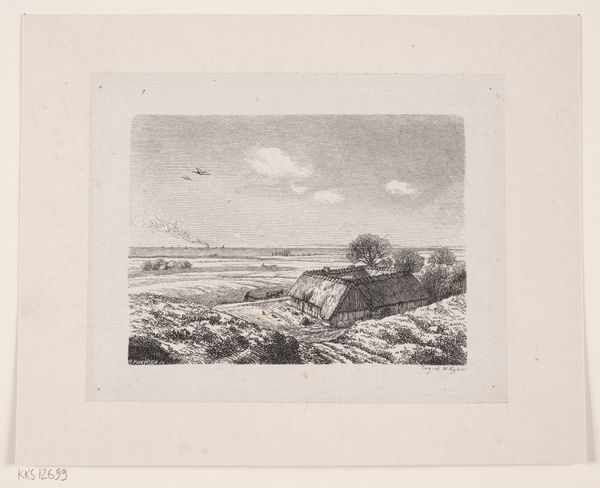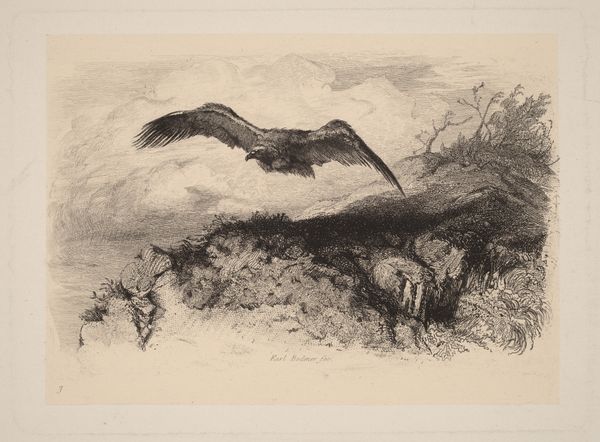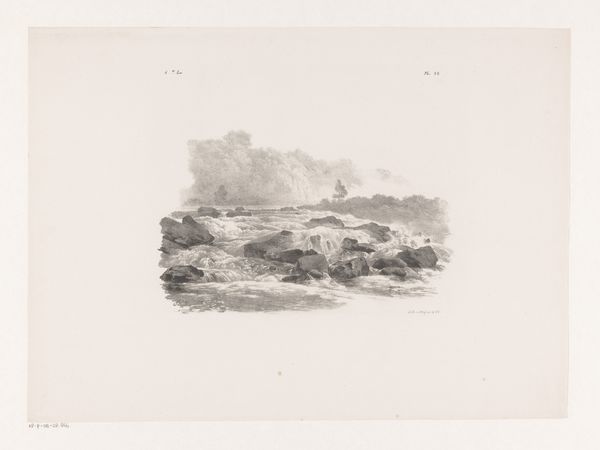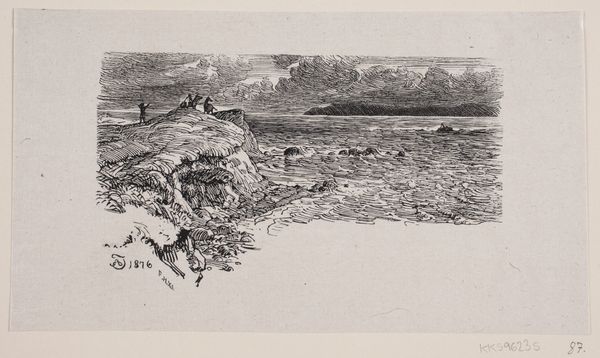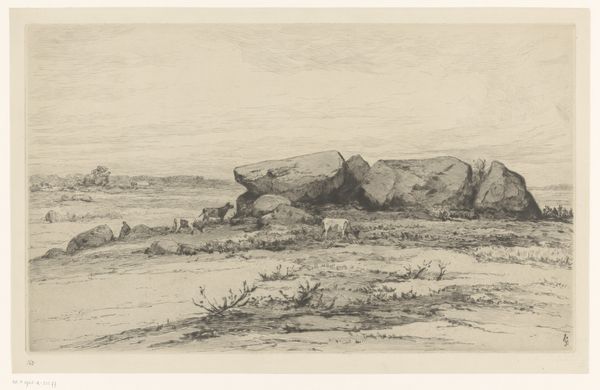
drawing, print, etching
#
pencil drawn
#
drawing
# print
#
etching
#
landscape
#
pencil drawing
#
realism
Dimensions: 202 mm (height) x 225 mm (width) (bladmaal)
Curator: Welcome. We are looking at "Eftersommeren", or "Late Summer," an etching made by H.P. Hansen between 1829 and 1899. It resides here at the SMK, Statens Museum for Kunst. Editor: My first thought is of transience. The looming clouds, the flock of birds taking flight. There is movement everywhere, and that contrasts so sharply with the seeming stasis of the landscape itself. Curator: It certainly captures a fleeting moment. Hansen’s landscapes are particularly interesting for how they intersect with social histories of land use and agricultural labor in Denmark at the time. Look at the figure in the foreground; one could spend time thinking about what role the rural farmer held. Editor: Yes, it makes me consider the act of etching itself – the labor involved in meticulously creating this scene, the tools used, the plates, the acid. The materiality of the image emphasizes the physicality of work, mirrored in the image by the farmer at labor. The density of lines communicates that effectively, don't you think? Curator: I do. I find it interesting how Hansen uses the etching medium to explore themes of Romantic nationalism— a celebration of the Danish landscape and a way to bolster a shared cultural identity during a period of significant social and political change. It's about making accessible ideals, shared experiences within art accessible. Editor: Absolutely, and look at the variety within the lines! Thick, thin, cross-hatched, all working to convey depth and texture. You feel the scratch of the drypoint. This isn’t just a pretty landscape, it’s a testament to process, the hours etched onto the plate, physically and conceptually. That dense cloudscape, it's made of something, isn't it? Labor, weather, all are physical events in their own right, I think. Curator: It really encourages us to consider how landscape art functions, or functioned then, within the larger project of nation-building and the visualization of national identity. And that brings so much of history into art. Editor: It makes you consider the materiality of art and history. The plates, the presses that produced these prints…they shaped how a culture saw itself. The physical imprint, that is a mark that really does stay.
Comments
No comments
Be the first to comment and join the conversation on the ultimate creative platform.
